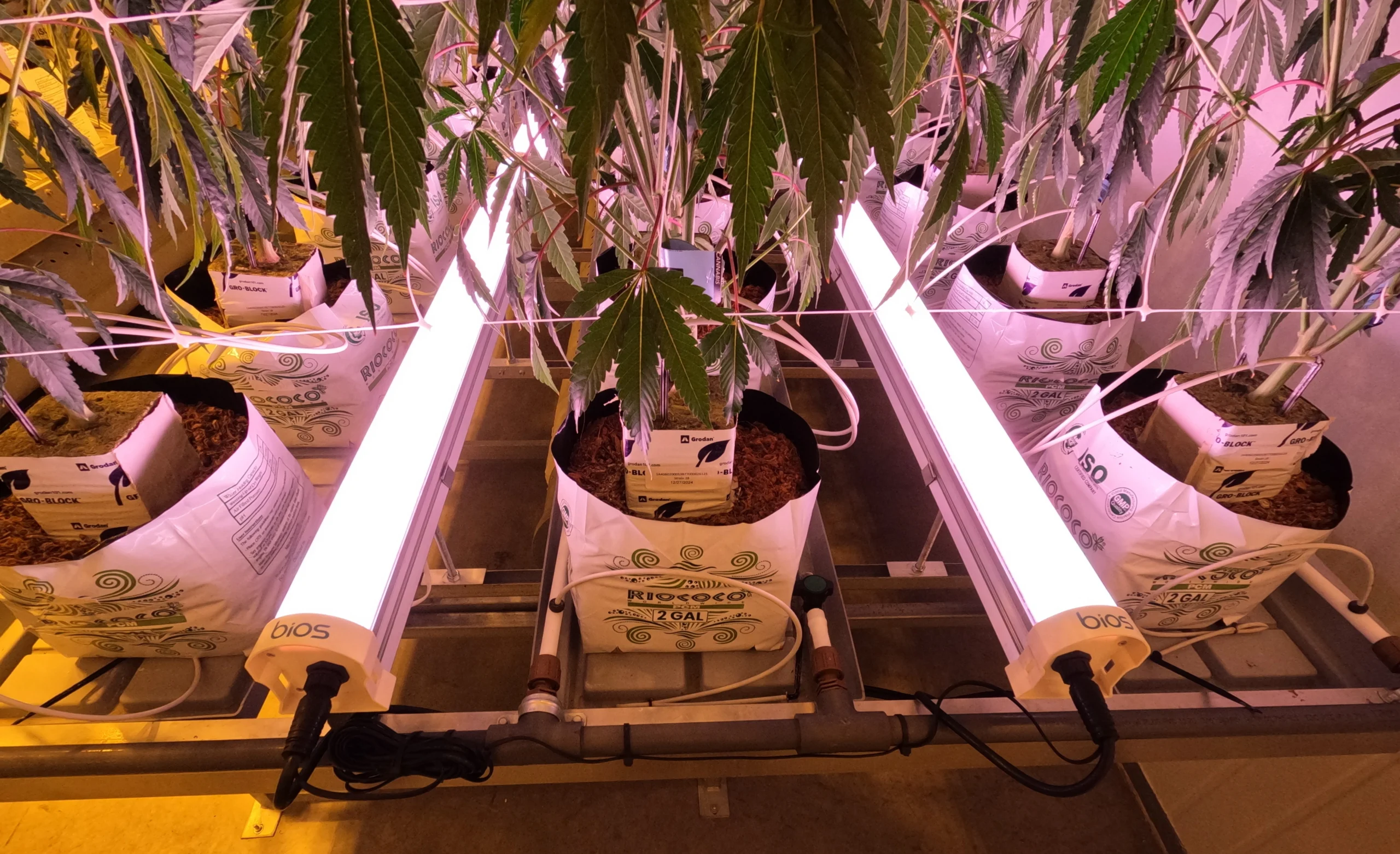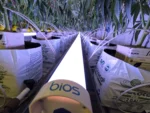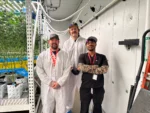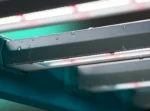In a competitive and margin-tight cannabis market, every advantage matters. Lately, one simple innovation is lighting up the conversation: under-canopy lighting.
For years, growers have focused their investments on top lighting, dialing in their lighting spectrum and uniformity across the canopy. But what about the rest of the plant? Beneath the top colas, you’ll often find immature, lower-value buds—“C-buds” that rarely make it to the premium shelf. Under-canopy lighting changes that equation.
As Jim Stephens, BIOS Grow Lights Vice President of Horticulture Sales, and Patrick Kamphaus, Vice President of Customer Success, explain, this isn’t just hype. It’s a proven strategy to increase yield, improve quality, and reduce labor without overhauling your entire lighting infrastructure.
Why Under-Canopy Lighting Is in the Spotlight
The concept isn’t new, but interest is spiking fast.
“Almost everyone we talk to brings it up, wants to know something about it, or already knows they want it,” says Patrick. “It’s been a hot topic for the last year, easily.”
That uptick in attention owes a surprising debt to Instagram. “A couple people started doing it and showing the results, and then it snowballed,” Patrick says. “At first, I wasn’t sure if it was a fad or the real thing.”
Turns out, it’s very real.
“Pretty much everyone that’s tried it is getting at least 30% more yield,” Jim adds. “We see 30 to 40% all the time. This is eliminating C-buds and increasing higher quality buds. A lot of people are excited about the ability to decrease their labor too, because they’re not … trimming out all the foliage down below. Now they’re keeping it because they know they’re going to get higher quality buds down lower. Quality is going up, bud size is going up, and quantity of high-quality buds is going up.”
The Technical Advantage: How It Works
From a technical standpoint, under-canopy lighting works by delivering targeted light to the lower parts of the cannabis plant that typically receive minimal light due to shading from upper foliage. This lighting supplements the photosynthetically active radiation (PAR) reaching lower bud sites, increasing their ability to photosynthesize and develop into higher-quality, denser buds.
Key technical factors:
+ Red and far-red wavelengths (600–750 nm) are most effective for penetration and lower canopy stimulation.
+ Improved light uniformity across the vertical profile of the plant reduces the quality gap between top and bottom buds.
+ Strategic integration with top lighting ensures overall DLI (Daily Light Integral) remains balanced.
+ Because light is being added at a different angle and layer, environmental controls (VPD, CO₂, irrigation) must be adjusted to handle the increased metabolic activity.
“At first, there was skepticism,” Patrick says, “people saying, ‘Why would you light the underside of leaves when the receptors are on top?’ But we’re not targeting the undersides. We’re feeding the whole plant, especially those shaded bud sites that normally don’t develop well.”
The result? More usable flower per square foot, less “larf,” and a more efficient, productive canopy from top to bottom.
Plug-and-Play—With a Caveat
This isn’t a complex install. Under-canopy lights can be integrated into almost any environment: single-tier or multi-tier vertical racks, indoor or greenhouse, you name it.
But before you plug them in, make sure your facility is ready:
Power: Ensure your panels and circuits can handle the added load.
HVAC: “It’s not a huge heat load, but it’s enough to matter,” Jim explains. “You need to pull that extra heat out of the room.”
Workflow: Most growers will need to remove the under-canopy fixtures when flipping rooms for cleaning and access.
Even though these are lower-wattage fixtures, you’re still adding photon energy to the system—and that demands balance.
More Light, More Strategy
Adding light means adjusting everything else.
“You probably don’t even need under-canopy lights the first week of flower,” Patrick says. “But after that, it’s about slowly increasing intensity. Don’t just blast them on Day 1.”
The plant is a system. Light, CO₂, water, and nutrients all need to scale together to maintain balance.
“If you’re feeding 1,500 PPFD from the top but you’re underfeeding nutrients, or your CO₂ is off, you’re wasting light,” Jim says. “More light equals more demand. So increase your feed schedule, bump your CO₂, and watch your VPD.”
One key tip from the BIOS team: place sensors at canopy level, not above.
“What the plant is experiencing down low is very different from what’s happening a meter up,” Jim says. “You’ve got to monitor those microclimates.”
Final Word: A Low-Lift Upgrade with High Impact
In a cash-strapped market, under-canopy lighting offers a rare opportunity: a plug-and-play solution that improves yield and quality without massive capital investment.
“It’s easier to add some under-canopy lights than replace your entire overhead system,” Patrick says. “If you’ve got the power and HVAC, it’s almost a no-brainer.”
As with any cultivation innovation, success comes down to understanding the system. Monitor your inputs, ease into intensity, and align your environmental controls to handle the added load. Done right, under-canopy lighting can be a quiet revolution in your grow.
And if you’re not sure where to start? BIOS can help you run the numbers and dial in the strategy.
Because in the end, the lights aren’t the point. The results are.




